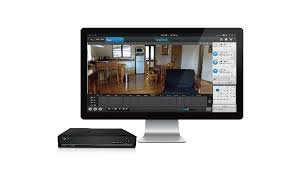Why you should choose the right CCTV camera.
Why you should choose the right CCTV camera.
Choosing the right CCTV camera depends on your specific needs and priorities. below are breakdown of some key factors to consider:
The Location:
Indoor vs Outdoor: Outdoor cameras need weatherproof housing and night vision capabilities. Indoor cameras can be simpler and more discreet.
Coverage Area: Wide-angle cameras are good for large areas, while bullet cameras focus on specific zones. PTZ cameras offer maximum flexibility.
Security Needs:
The Resolution: Higher resolution provides clearer footage for identification.
Night Vision: Essential for low-light situations. Consider infrared (IR) or starlight night vision for varying light conditions.
Motion Detection: Triggers recording or alerts only when movement is detected, saving storage space and reducing false alarms.
Other Features:
Wireless vs Wired: Wireless offers easy installation but may have lower range and potential signal interference. Wired cameras are more reliable but require cabling.
Audio Recording: Useful for capturing conversations but raises privacy concerns.
Storage: Cloud storage offers remote access but incurs fees. Local storage (SD card or NVR) is more private but requires on-site management.
Here's a general guide to CCTV camera types that might suit your needs:
Bullet cameras: Great for outdoor use with good night vision for monitoring driveways, entrances, or large open spaces.
Dome cameras: Vandal-resistant and discreet, suitable for general indoor surveillance in offices, retail stores, or hallways.
PTZ cameras: Ideal for large areas or where you need to track movement, often used in high-security environments.
360-degree cameras: Provide a complete view, useful for monitoring stores or open areas where you need a wide field of vision.
Additional Tips:
Research compatibility: Ensure the camera works with your existing security system or recording device.
Consider privacy laws: Be aware of local regulations regarding CCTV use and signage requirements.
Think about future needs: Choose a system that can be easily expanded if you plan to add more cameras later.
Indoor and outdoor security cameras share many similarities despite being designed for different environments. Here's a breakdown of their common features:
Core Function: Both capture video footage for monitoring and security purposes.
Video Resolution: Both can come in various resolutions, offering standard definition (SD) up to high-definition (HD) or even 4K for sharper images.
Night Vision: Many indoor and outdoor cameras offer night vision with infrared (IR) technology for capturing clear footage in low-light conditions.
Motion Detection: Both can be equipped with motion sensors to trigger recording or send alerts only when movement is detected.
Remote Viewing: Many cameras allow remote viewing of live footage and recordings through a smartphone app or web interface.
In essence, both indoor and outdoor cameras can provide the basic functionality of capturing video for surveillance
Differences between indoor camera and outdoor camera
Indoor and outdoor security cameras may seem similar at first glance, but they're built to handle different environments. Here's a breakdown of their key differences:
Durability:
Outdoor: Built tough to withstand harsh weather conditions like rain, snow, extreme heat/cold, and wind. They're often housed in weatherproof casings and made of impact-resistant materials to resist vandalism.
Indoor: Designed for controlled indoor environments, so they are typically lighter and less robust.
Size:
Outdoor: Often larger and bulkier due to their weatherproof housing and need for heat dissipation.
Indoor: Can be smaller and more discreet for aesthetic reasons and easier placement within homes or buildings.
Night Vision:
Outdoor: Night vision is crucial for outdoor cameras as they need to capture clear footage in low-light or complete darkness. They might have stronger IR illuminators for better night vision range.
Indoor: While some indoor cameras can have night vision, it's not always a priority as they typically operate in controlled lighting conditions.
Power Source:
Outdoor: May require wired connections for power due to their continuous operation and potential distance from outlets. Some might offer PoE (Power over Ethernet) for both data and power transmission or even solar power options.
Indoor: Can be powered by wires or even be wireless with rechargeable batteries, as they often operate near available outlets and have lower power demands.
Field of View:
Outdoor: Depending on the purpose, they might have wide-angle lenses to cover larger areas like driveways or narrower lenses to focus on entry points.
Indoor: Can have variable field of views depending on the application. Some might be wide for general room monitoring, while others might be more narrow for focused areas.
Other Considerations:
Temperature Range: Outdoor cameras have a wider operational temperature range to withstand extreme weather.
Tamper Resistance: Outdoor cameras are often built to be more tamper-resistant to deter vandalism.
Privacy Features: Some indoor cameras might have privacy masking options to block out specific areas from view.
Choosing the right camera depends on your needs. If you need a camera to monitor your backyard at night, an outdoor camera with strong night vision is essential. If you want a camera to keep an eye on your living room while you're away, an indoor camera with a wide field of view might suffice.
For specific recommendations, it's helpful to browse online retailers or consult a security professional who can assess your needs and recommend CCTV cameras that fit your budget and priorities, you can message us on homehomenetwork0@gmail.com.





Comments
Post a Comment